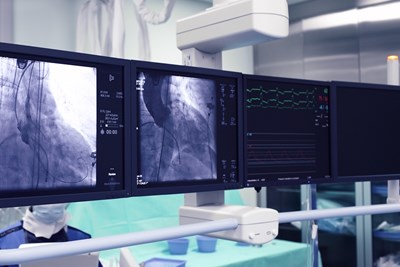A stent is generally placed as part of an angioplasty. When arteries, particularly near the heart, become clogged, angioplasty is used to make the artery larger. A small balloon is placed in the problematic artery and then inflated, widening the artery sufficiently for blood flow to resume.
The stent, a small tube generally made of metal-based mesh, is inserted to provide additional support for keeping the artery open. According to the National Institute of Health, stents may also be used “to improve blood flow and help prevent the arteries from bursting.”
If you or a loved one are facing stent surgery, here’s a look at what to expect during the recovery period.
At the Hospital
As with most coronary surgeries, you can expect to spend at least one night in the hospital—depending upon the specific reason for the stent, you may stay longer. Make sure to have a strong support system already in place, as you’ll likely be needing a ride home from the hospital. Ask your doctor or nurses any questions you have regarding new medication or any pre-existing medication (such as whether to continue its use), what sort of physical limits to expect, and what sort of follow-up care will be necessary.
At Home
Be prepared to continue leaning on your support system once you return home. Exercise should be limited, along with lifting anything heavy, until your doctor gives you the go-ahead.
Additionally, to prevent the need for further coronary surgeries, you may need to make some serious lifestyle changes. Once your medical team allows it, begin an exercise regimen suitable to your age and abilities. Try to cut out bad habits like smoking, drinking, or other things that can make atherosclerosis and other arterial issues worse. Adopt a healthy diet, with plenty of water, vegetables, and lean meats. You may need to take blood thinners or medication to lower blood pressure. Talk to your doctor about potential side effects of such medications.
Risks
No surgery comes without a few risks. Infections are always a possibility when the body has to accept foreign objects or be cut open. Be alert for a fever, excessive bleeding or pain at the procedure site, as well as redness or swelling. Slight bruising, tenderness, or a hard knot at the procedure site is not unusual.
Clotting may also be an issue. A sedentary lifestyle—even the period of rest required after surgery—can make the body more susceptible to clots, especially if you’re already having enough trouble with blood flow to require a stent. In most cases, your doctor will probably recommend medication to prevent clotting. Do not stop taking it until your doctor thinks you’re ready. If you notice any reactions to your medication (like a rash), irregularities of your heartbeat (called “arrhythmias”), difficulty breathing, feeling faint, a change in body temperature, or any other unusual or uncomfortable chances, contact your doctor immediately.



